After Falling Eight Stories, Ocho Lands A New Home

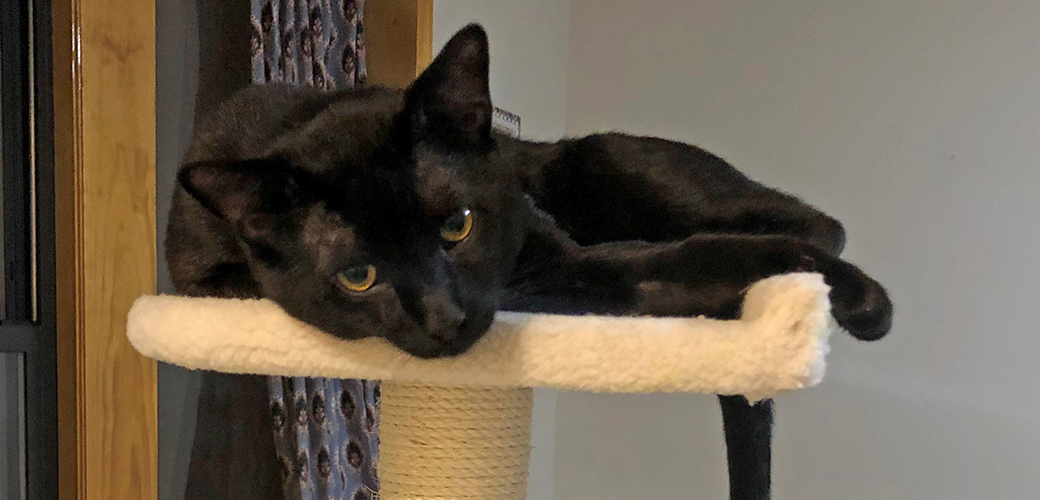
Months before they adopted their first cat, Karen L. and her husband, Patrick, were brainstorming cat names.
“Our pandemic exercise was, ‘What would we name a cat?’” says Karen.
The pandemic proved to be an opportune time to adopt. Karen, a librarian, has been working remotely from the couple’s Astoria home, and Patrick, a barber, was briefly unemployed. They applied online for a cat from the ASPCA.
On the same day Karen received her first COVID-19 vaccine, February 28, she received a call from Ammie Levi, an ASPCA Matchmaker who told her about Abe, a three-year-old black cat. Ammie sent them a photo and the couple visited the ASPCA Adoption Center a few days later to meet Abe in person.

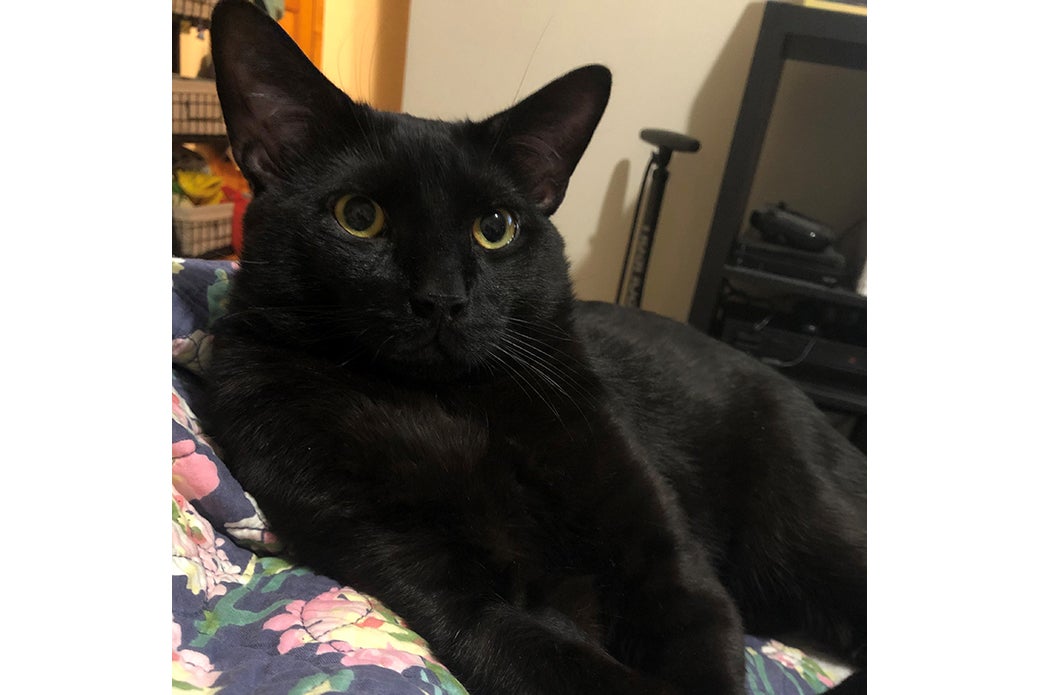
“I loved that he was super social,” says Karen. “Abe jumped out of his cage and approached us both. He rolled around and met us at eye level. We connected quickly. He put on quite a show to get adopted and did a very good job.”
Lucky Breaks
Abe was brought to the ASPCA by the NYPD on February 16 after reportedly falling from an eighth-floor apartment window in Manhattan.
Intake X-rays revealed a mild pneumothorax—an abnormal existence of air in Abe’s chest cavity outside his lungs—as well as bruises on his lungs.

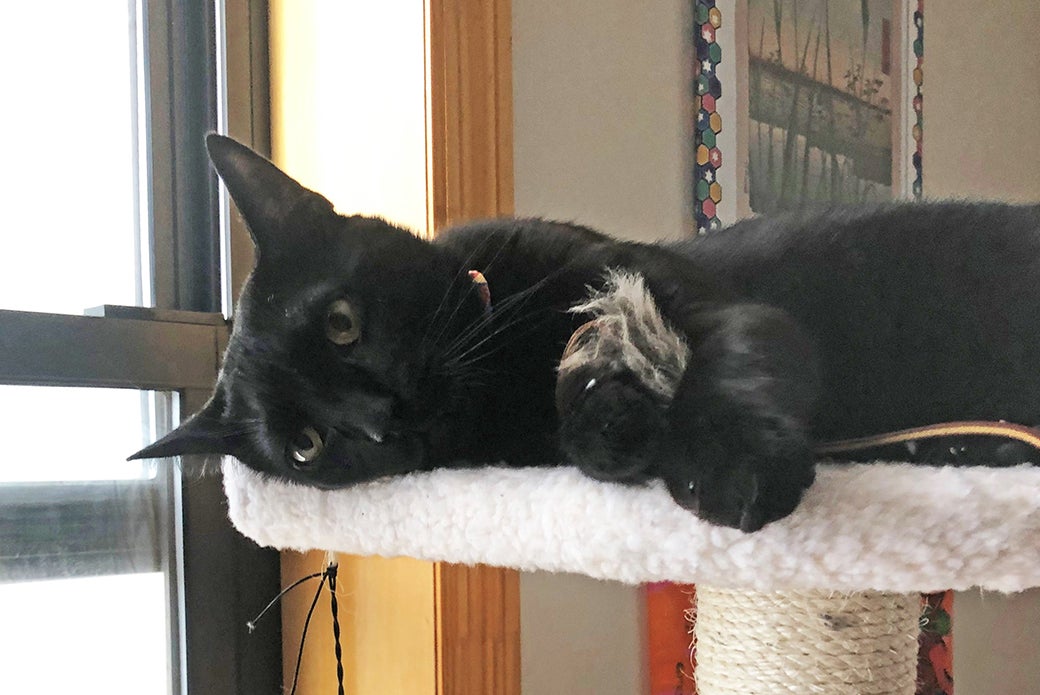
“Abe had signs of what is called high rise syndrome—an array of injuries common in cats who fall from multi-story heights,” says Dr. Aubrey Crowley, Medical Supervisor of the ASPCA Animal Recovery Center (ARC).
“Lucky for Abe, he did not have any broken bones or any head injuries—both common findings in cats that fall from heights.
“Part of why Abe got lucky is that he fell from a higher floor,” adds Dr. Crowley. “Cats falling from about five stories tend to be able to right themselves, flex their legs, and brace for impact, reducing the amount of traumatic injury they endure. Cats who fall from lower heights often fall with their legs extended, leaving them more prone to fractures and facial trauma/injuries.”

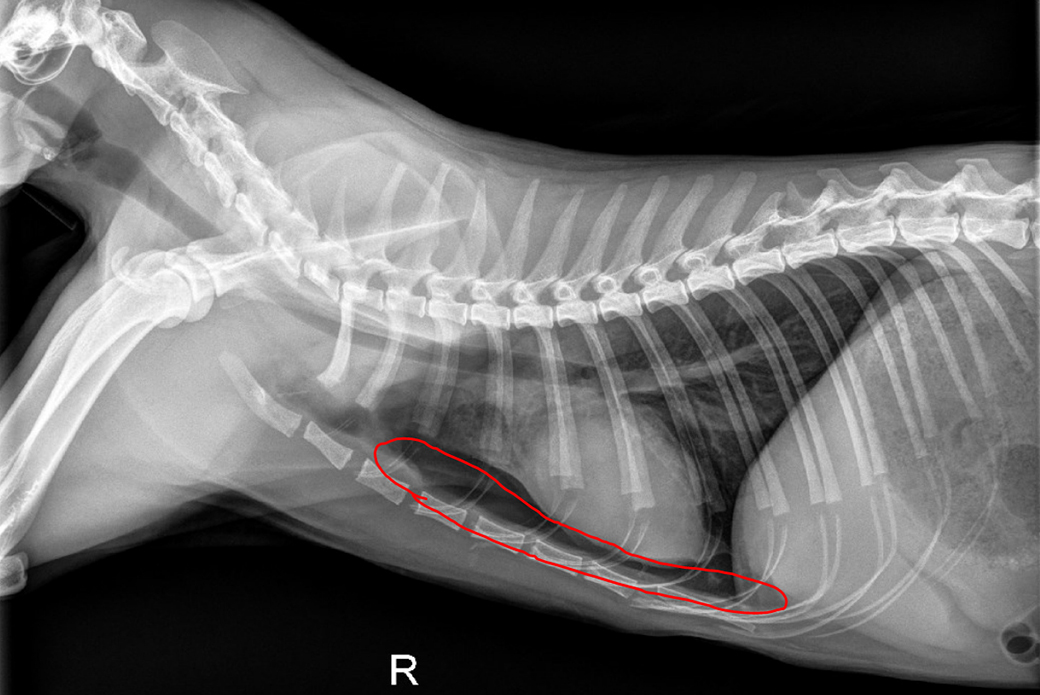
Ocho’s body was able to reabsorb the amount of free air in his chest cavity (outlined in red) that resulted from his fall.
Abe’s luck continued when veterinarians noted that his body was able to reabsorb the small volume of free air in his chest cavity. He did not have trouble breathing—a common symptom seen with pneumothorax—so he did not have to undergo a thoracocentesis, or a chest tap, where veterinarians would have used a sterile needle and syringe to pull excess air from his chest cavity.
Dr. Crowley named Abe after President Lincoln since he arrived at the ASPCA the day after President’s Day.

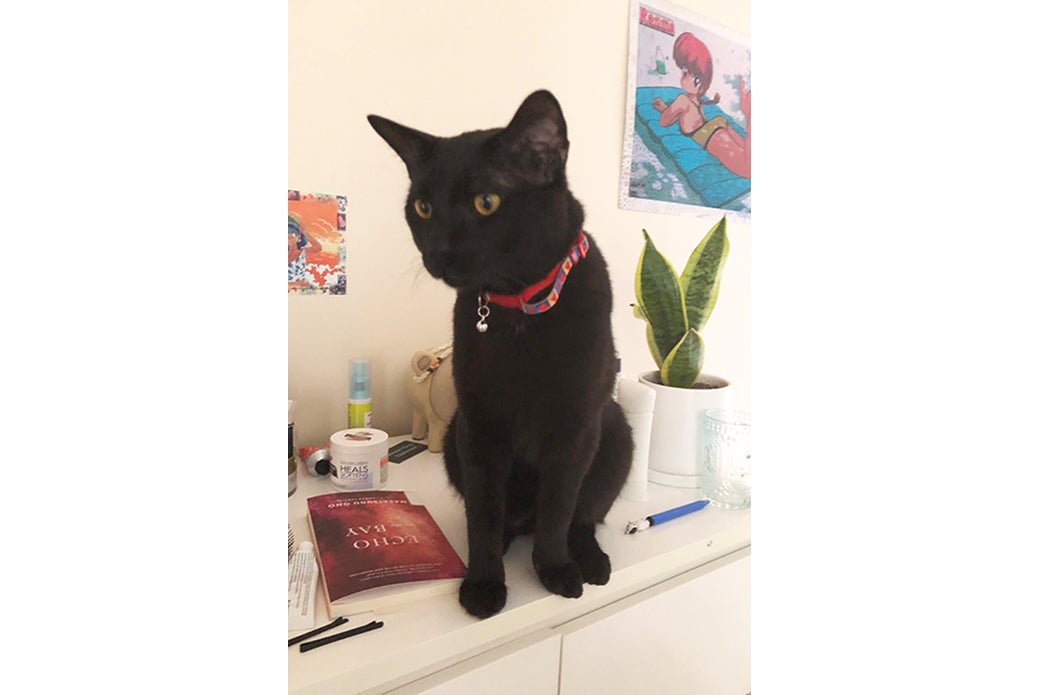
“Within a couple of days, he was also nicknamed the ‘house panther’ of ARC, because he was such a beautiful and large black cat,” she says.
“Abe is just my type—a big, beautiful black cat,” says Samantha Nigbur-Mays, ASPCA Animal Behavior Counselor. “He was very sweet and talkative and wanted to socialize with anyone and everyone who showed him attention—even the grumpy cats. Despite his injuries, he had no behavior concerns.”
Dr. Crowley says that Abe’s not being neutered might have played a role in his fall.
“Intact cats are more likely to roam to look for potential mates,” she says. “That unfortunately can lead them to jump or fall from a window. That’s why secure window screens are so important for all cats to prevent falls like Abe’s.”

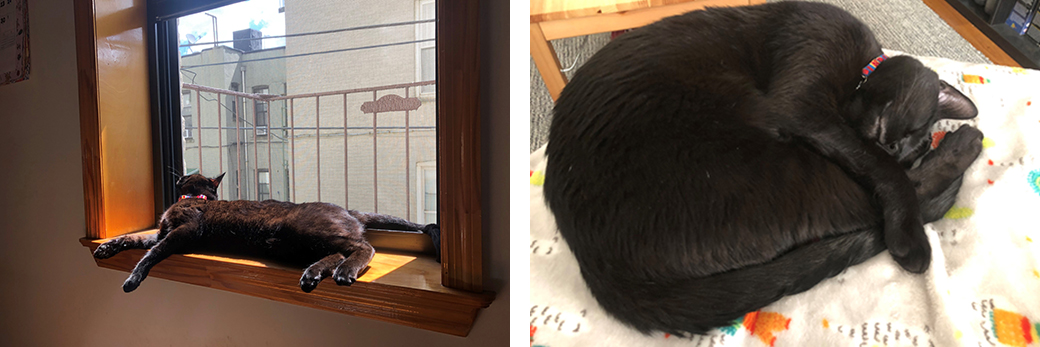
On February 24, Abe was neutered and microchipped. A few days later he was ready for adoption.
Opting for “Ocho”
As Karen and Patrick completed their adoption process, they finally settled on a name: Ocho.
“We picked Ocho because he fell from eight floors and now has eight lives left,” Karen jokes. Patrick also wanted to name him after Chad Ochocinco, a former American football player.
Once home, Ocho settled in “shockingly fast,” Karen says. “We bought a new chair with an ottoman—and the ottoman is his. We consider him an indispensable and vital member of our family.”
Eventually the couple would like to adopt another cat to be Ocho’s companion. Until then, Ocho is enjoying all the attention and demonstrates absolutely no fear of heights.

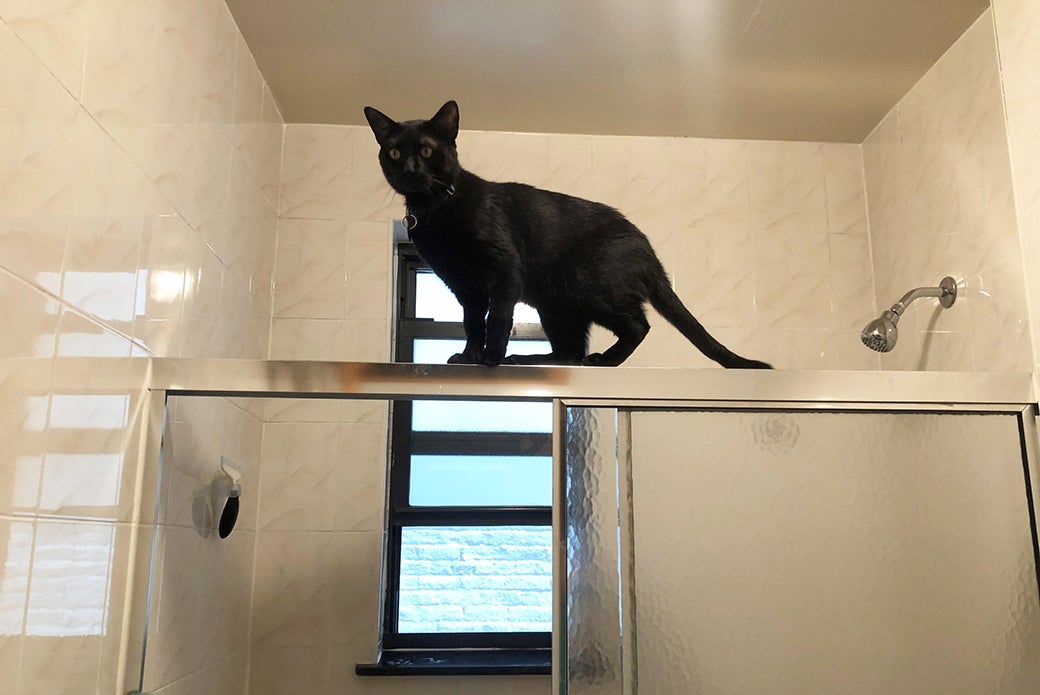

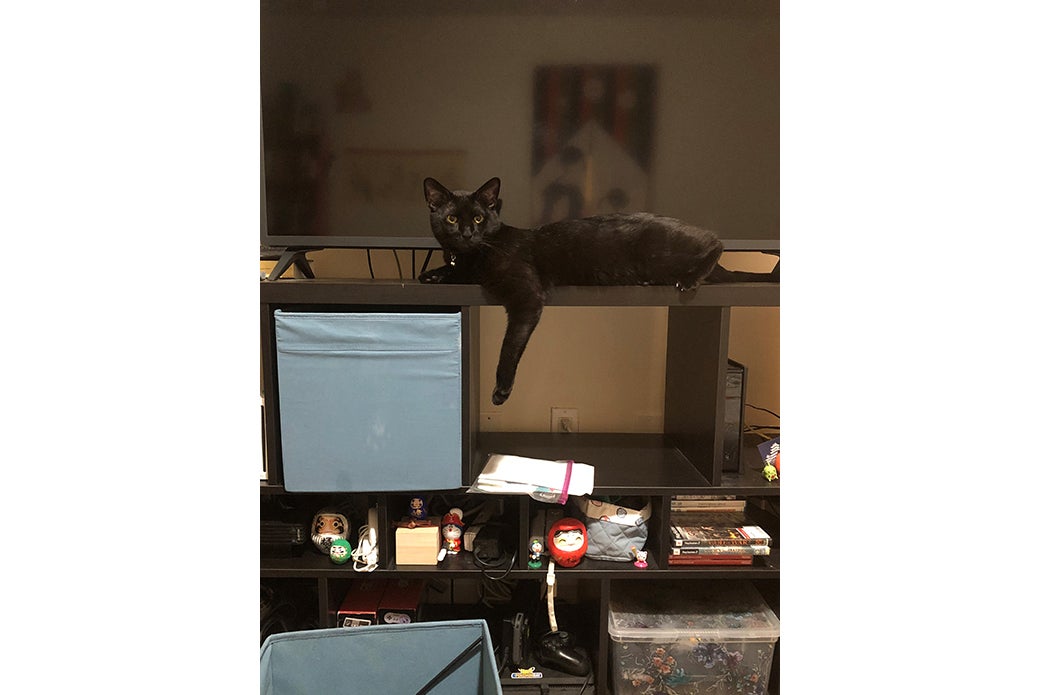
“He’s curious and brave,” Karen says, “And still not afraid of jumping.”
Source: Read Full Article


